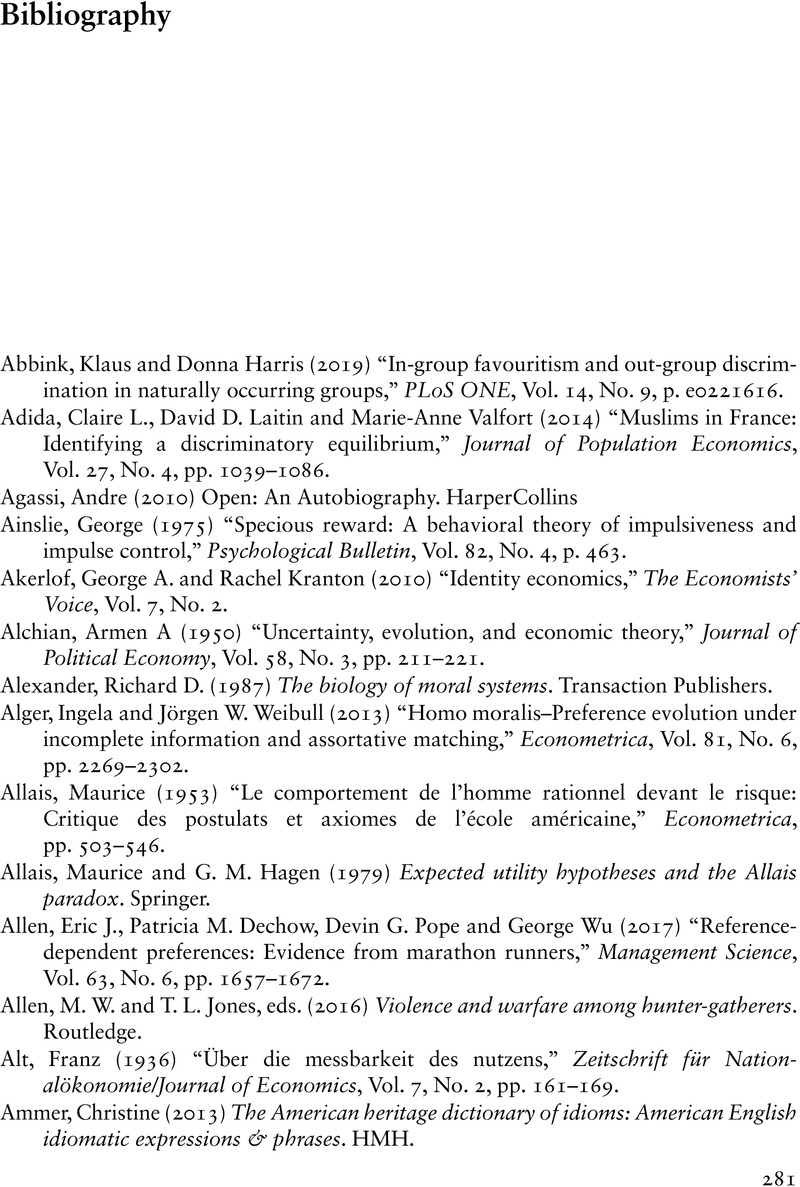Bibliography
Published online by Cambridge University Press: 12 November 2022
Summary

- Type
- Chapter
- Information
- Optimally IrrationalThe Good Reasons We Behave the Way We Do, pp. 281 - 306Publisher: Cambridge University PressPrint publication year: 2022



